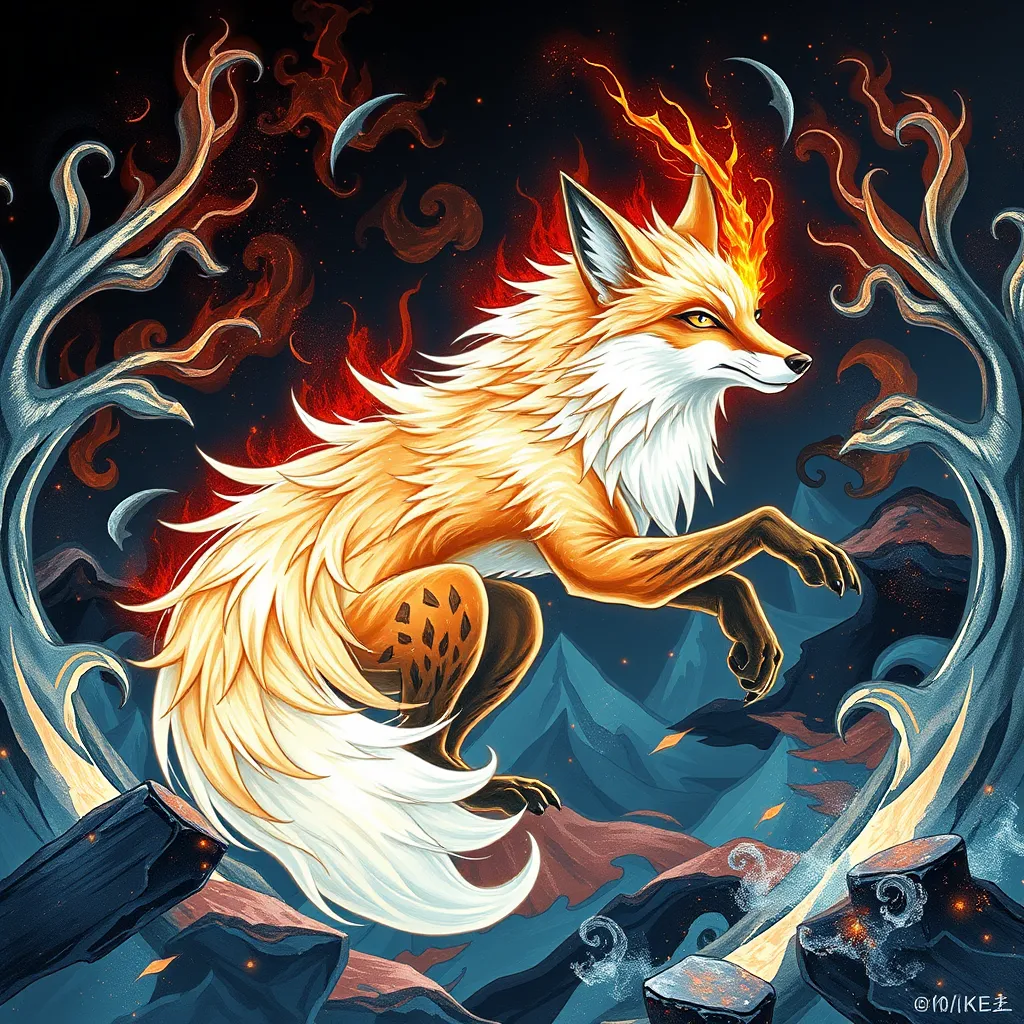Echidna and the Muses: Examining the Serpent-Woman’s Influence on the Arts and Creativity
I. Introduction
In the rich tapestry of Greek mythology, Echidna stands out as a complex figure, often referred to as the “Mother of Monsters.” Her dual nature embodies both creation and destruction, making her a compelling subject for exploration. In contrast, the Muses are celebrated as the divine sources of inspiration for the arts, each representing different domains of creativity. This article aims to delve into the intersection of Echidna’s symbolism and the Muses’ influence on various art forms, highlighting how these mythological figures continue to inspire and shape artistic expression.
II. Echidna: The Serpent-Woman in Mythology
Echidna’s origins in Greek mythology trace back to the early tales of chaos and creation. Described as a half-woman, half-serpent entity, she is often depicted with the upper body of a beautiful woman and the lower body of a fearsome serpent. Echidna’s relationship with Typhon, the monstrous storm giant, further solidifies her position in myth as a progenitor of chaos. Together, they birthed a multitude of legendary creatures, including the Chimera and the Sphinx.
Symbolically, Echidna represents a duality that resonates deeply with the themes of creation and destruction. While she is associated with the birth of fearsome beasts, she also embodies the nurturing aspect of motherhood and the complexities of life. This duality can be seen as a parallel to the artistic process, where creativity often emerges from chaos and conflict.
III. The Muses: Guardians of Creativity
The Muses, nine goddesses of inspiration, play a crucial role in the arts and sciences. Each Muse governs a specific domain, providing guidance and creativity to artists, poets, and thinkers. The Muses are:
- Calliope: Muse of epic poetry
- Clio: Muse of history
- Erato: Muse of love poetry
- Euterpe: Muse of music
- Melpomene: Muse of tragedy
- Polyhymnia: Muse of hymns
- Terpsichore: Muse of dance
- Thalia: Muse of comedy
- Urania: Muse of astronomy
Historically, the Muses were revered in ancient Greek culture, inspiring countless works of art and literature. They symbolized the pursuit of knowledge and creativity, encouraging artists to explore the depths of human experience.
IV. Thematic Connections Between Echidna and the Muses
The thematic connections between Echidna and the Muses reveal a fascinating interplay of duality. While Echidna embodies chaos and the birth of monsters, the Muses represent the structured creativity that arises from such chaos. This relationship underscores the importance of female figures in mythology, who often inspire and drive artistic expression.
Echidna’s characteristics resonate with themes explored by the Muses. For instance, the Muse Melpomene, associated with tragedy, can be seen as reflecting the darker aspects of Echidna’s nature, while Calliope, the Muse of epic poetry, connects with the narrative power of creation that Echidna symbolizes. Together, they illustrate the complexities of life, where beauty and terror coexist.
V. Echidna’s Influence on Artistic Interpretations
The influence of Echidna on literature and poetry is profound. Numerous writers have drawn inspiration from her mythos, creating works that explore themes of femininity, power, and chaos.
- Literature: Authors like H.P. Lovecraft and Angela Carter have reimagined Echidna in their narratives, using her as a symbol of the monstrous feminine.
- Visual Arts: Artists such as Gustave Moreau have depicted Echidna in paintings, capturing her dual nature through striking imagery.
- Music: Composers have also found inspiration in Echidna, with operas and symphonic pieces reflecting her themes of power and mystery.
VI. Modern Interpretations of Echidna and the Muses
In contemporary art and literature, Echidna’s role is often reimagined. Modern interpretations frequently emphasize her complexity and agency, challenging traditional representations. Similarly, the Muses continue to hold relevance in today’s creative practices, serving as symbols of inspiration and artistic endeavor.
Feminist reinterpretations of these mythological figures have emerged, placing a spotlight on the power dynamics at play in their narratives. Artists and writers are increasingly exploring themes of empowerment, transformation, and the reclamation of female mythological figures.
VII. Case Studies: Artists Inspired by Echidna and the Muses
Several contemporary artists have found inspiration in Echidna and the Muses, creating works that reflect their themes and complexities.
- Artist Profile: Frida Kahlo – Kahlo’s works often explore themes of duality and suffering, resonating with Echidna’s symbolism.
- Author Profile: Madeline Miller – In her novel “Circe,” Miller reinterprets mythological figures, including those connected to Echidna, presenting them with depth and nuance.
- Performance Artist: Marina Abramović – Abramović’s performances often invoke the raw power and chaos associated with Echidna, challenging audiences to confront their own perceptions of femininity.
These works not only reflect the themes of the Muses but also contribute to contemporary artistic movements that seek to redefine mythological narratives.
VIII. Conclusion
In conclusion, Echidna’s influence on the arts, viewed through the lens of the Muses, reveals a rich interplay of creativity and chaos. Both figures embody essential aspects of artistic expression, demonstrating how mythology continues to inspire and shape the creative landscape. As contemporary artists and writers engage with these mythological themes, they highlight the ongoing relevance of Echidna and the Muses in inspiring creativity and exploring the complexities of the human experience. The intersection of mythology and artistic expression remains a powerful arena for exploration and innovation in today’s world.
https://www.youtube.com/watch?v=0G7BEH727eY



